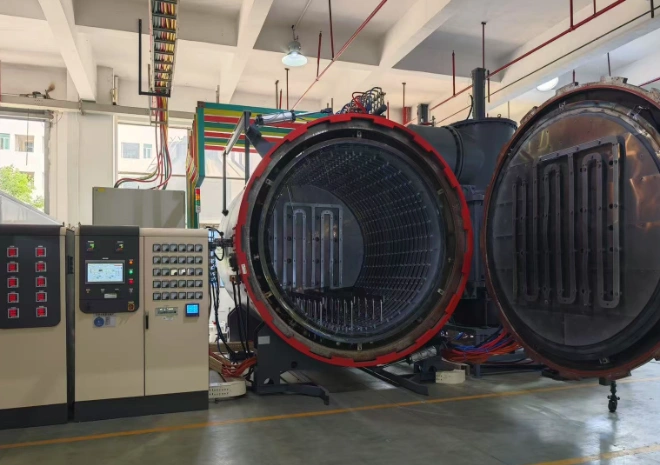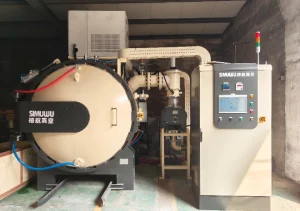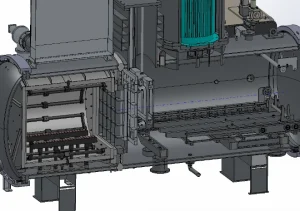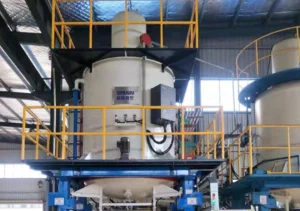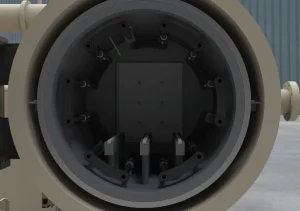Introduction:
Vacuum annealing furnace is a specialized heat treatment equipment designed for annealing metal or non-metallic materials in a vacuum environment. Its core function is to eliminate internal stresses generated during material processing, improve microstructure, and optimize mechanical properties (such as enhancing plasticity and reducing hardness) through slow heating, heat preservation, and cooling. It can also achieve specific physical and chemical transformations while preventing materials from being oxidized or contaminated at high temperatures.
As an indispensable key equipment in modern material processing, precision manufacturing, and high-end industrial fields, its technical advantages make it irreplaceable in application scenarios that pursue high-quality and high-performance materials.
Main Advantage
1.Reduction of oxidation and decarburization:
Heating in a vacuum environment can significantly reduce oxidation and decarburization on the material surface. This is because the absence of air means a lack of oxygen, thereby avoiding oxidation reactions, maintaining the surface quality of workpieces, and stabilizing the chemical composition inside the material.
2.Improvement of surface finish:
Due to reduced oxidation, materials generally retain good surface finish after vacuum annealing, which is particularly important for precision parts requiring high surface quality.
3.Enhancement of mechanical properties:
Vacuum annealing allows more uniform control of heating and cooling processes, helping to achieve a more uniform microstructure, thereby improving the material’s mechanical properties such as toughness and plasticity.
4.Reduction of contamination:
Since the treatment is carried out in a closed vacuum environment, it can effectively prevent pollutants in the environment from adhering to workpieces, resulting in a purer treatment effect.
5.Improvement of material performance:
In some cases, vacuum annealing can be used for heat treatment of special materials or special requirements. For example, when processing high-performance materials such as superalloys and high-speed steels, their properties can be controlled more effectively.
6.Environmental friendliness:
The vacuum annealing process emits almost no harmful gases, has little impact on the environment, and is a more environmentally friendly heat treatment method.
7.Improvement of processing efficiency:
Although the equipment and operating costs of vacuum annealing may be higher than those of conventional annealing, the required heating time is usually shorter, which can improve production efficiency.
8.Wide applicability:
Vacuum annealing is not only suitable for iron-based alloys but also for non-ferrous metal materials such as copper, aluminum, and nickel-based alloys, featuring a wide range of applications.
Related Configuration
1.Heating Chamber
● Heating Chamber : Circular/ Square
● Heating Element : Graphite/ Molybdneum
The heating chamber is composed of a stainless steel frame, thermal insulation layer, heating elements, insulating components, and a furnace bed. This structure offers advantages such as uniform heating, high thermal efficiency, rapid heating and cooling, high temperature control precision, strong adaptability, long-term stability, excellent durability, safety, energy conservation, and emission reduction.
2.Vacuum system
Well-known domestic and foreign vacuum pump brands, such as EVP, Leybold, etc., are matched according to customer needs.
3.Control system
The operation control of this equipment is performed by the Siemens S7-1200 programmable logic controller. Interlock protection control is adopted for the equipment’s vacuum pump, valves, heating power supply, cooling fan, and other components. The system can judge and alarm abnormalities occurring during equipment operation, enabling fully automatic control. The network system supports remote network control and data transmission functions. All low-voltage components use international brands such as Siemens, Schneider, and Phoenix, which are highly reliable in terms of quality, performance, and craftsmanship, reducing the failure rate of the control system.
● The network system supports remote network control and data transmission functions.
● Remote fault diagnosis, remote process debugging, etc.
● Supports software upgrade and update.
4.Other System
Our temperature measurement system adopts a nine-point temperature measurement method to monitor product temperatures in real-time and accurately, ensuring the uniformity of furnace temperature is maintained within the range of ±3℃ – ±5℃; the pneumatic system supports automated control via a touchscreen, enabling pneumatic control of the entire gas circuit; the inflation system can be set up once with no need for further adjustments, as on-off control is achieved through solenoid valves, making it simple, convenient, and easy to adjust; an independent water cooling system is equipped, mainly used to control the temperature of the furnace body, vacuum pump, and heating electrodes to maintain the normal operation of the vacuum furnace.
Technical Parameter
| Model |
Effective Working Zone(W*H*L) |
MAX.Temperature |
Ultimate Pressure |
Temperature Uniformity |
Loading Capacity |
| RVA-446 |
400*400*600mm |
1300 ℃ |
2*10-3 Pa |
±5℃ |
200kg |
| RVA-557 |
500*500*700mm |
1300 ℃ |
2*10-3 Pa |
±5℃ |
300kg |
| RVA-669 |
600*600*900mm |
1300 ℃ |
2*10-3 Pa |
±5℃ |
500kg |
| RVA-7710 |
700*700*1000mm |
1300 ℃ |
2*10-3 Pa |
±5℃ |
700kg |
| RVA-8812 |
800*800*1200mm |
1300 ℃ |
2*10-3 Pa |
±5℃ |
1000kg |
| RVA-9915 |
900*900*1500mm |
1300 ℃ |
2*10-3 Pa |
±5℃ |
1200kg |
| RVA-121225 |
1200*1200*2500mm |
1300 ℃ |
2*10-3 Pa |
±5℃ |
1500kg |
| Remark: The working zone of equipment could be customized base on customer’s production. |
After-Sales and Acceptance Services
After the completion of production, the manufacturing plant will conduct factory acceptance test, including:
1.Ultimate vacuum test
2.Pressure rise rate test
3.Inspection of the completeness of all equipment systems
After the equipment is delivered to the user’s site, site acceptance test will be carried out, including:
1.Overall installation
2.Overall debugging
3.User training
4.Document handover
Warranty
The warranty period is one year from the date of final acceptance. It covers non-human-damaged components (excluding consumables/wear parts), as well as manual maintenance services and transportation costs incurred during the warranty period.
We have an independent after-sales service department dedicated to providing timely support to users, with a 24-hour rapid response guarantee.
